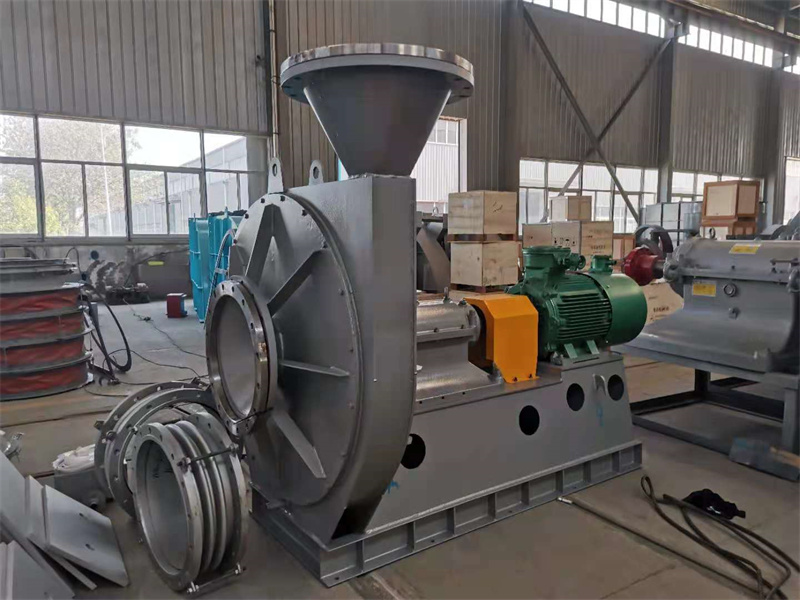1. Add turbulence device at the inlet (outlet) of the impeller
Adding a turbulent device (metal mesh) at the inlet or outlet of the impeller blade of a high-temperature fan can make the laminar boundary layer on the back of the blade immediately convert into a turbulent boundary layer, delay the separation of the boundary layer on the back of the blade, or even not separate , the trailing edge of the blade is installed on the net, and the airflow velocity and pressure gradient behind the net can quickly become uniform. If the net is in the vortex area, the vortex area can be greatly reduced, which can further reduce noise.
2. Reasonable volute-lingual gap and volute-lingual radius
When the airflow and the blades move relative to each other, the velocity and pressure in the airflow wake at the trailing edge of the blade are both smaller than the main flow area, so that the airflow velocity and pressure distribution behind the blade cascade are uneven. This uneven airflow is rotating, due to the moving There is a volute tongue at the airflow outlet of the blade, and the interaction between this unsteady flow and the volute tongue will generate noise. The closer the noise is, the louder the noise. Usually, a larger radius of the front end of the wind tongue can reduce the rotation noise of the high-temperature fan and the noise. Eddy current noise.

3. Inclined snail tongue
The periodic pulsating aerodynamic force generated by the periodic pulsating speed of the airflow of the impeller cascade of the high-temperature fan also causes the interaction of the volute tongue to generate rotational noise. The noise is related to the intensity of the pulsating aerodynamic force and the windward area of the vortex tongue. If it is inclined, the action area of the pulsating aerodynamic force in the same phase is small, and the radiated noise is also reduced.
4. Enhance the aerodynamic load of the cascade and reduce the peripheral speed
For high-temperature fans, strong forward blades are used, and the multi-blade impeller is beneficial to increase the aerodynamic load of the cascade. Under the condition of the same air volume and wind pressure, the peripheral speed on the outer circle of the impeller blades can significantly reduce the noise of the high-temperature fan.
5. A zigzag structure is set on the inlet and outlet sides of the moving blades
The zigzag structure on the inlet and outlet sides of the rotor blade can make the laminar boundary layer of the airflow on the blade convert into turbulent flow earlier, so as to avoid the unstable wave in the laminar boundary layer leading to the separation of the eddy current, so that the eddy current is separated and the noise is reduced. reduce.
6. Set the acoustic resonator at the cochlea
An acoustic resonator is set at the volute tongue. When the sound wave is transmitted to the resonator, the aperture of the small hole and the gas in the cavity move back and forth under the action of the sound wave. The moving gas has a certain quality and resists the movement caused by the sound wave. At the same time, when the sound wave enters the aperture of the small hole, a considerable part of the sound energy is lost due to heat loss due to the friction and damping of the neck wall. In addition, the gas-filled cavity has the property of resisting pressure changes from the orifice, and due to the combined effect of these factors, noise is reduced as the gas passes through the resonator.

 NEWS CENTER
NEWS CENTER Contact Us
Contact Us



